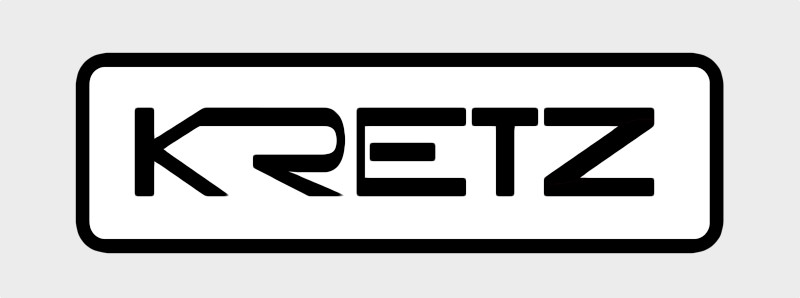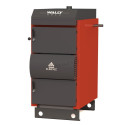Wally Holz 25
Meets the EKODESIGN standard, class 5.
WALLY HOLZ is a semi-automatic hot-water gasifier boiler designed for burning wood. It offers one of the cheapest forms of heating available on the market at current fuel prices. Thanks to the special design of the heat exchanger, which is lined with ceramic fittings and modern combustion control, a high efficiency of up to 90% has been achieved.
Wally Holz 25
New
Availability date:
The boiler is registered in the boiler lists for the SVT23979 subsidy.
It meets the EKODESIGN standard, class 5.
Nominal output: 25 kW
Indicative area: up to 250 m2 (for an uninsulated building)
Energy performance class: A +
Emission class of the boiler: 5
Ecodesign: Yes
Standard: EN 303-5
Warranty period:
3 years for heat exchanger leakage/ 5 years for 8mm heat exchanger
2 years on other parts
Basic fuel: Wood (log length max. 50cm)
Construction: boiler steel P265GH 6, 8 (extra charge) mm thick
WALLY HOLZ is a semi-automatic hot water gasifier boiler designed for wood burning. It offers one of the cheapest forms of heating available on the market at current fuel prices. Thanks to the special design of the heat exchanger, which is lined with ceramic fittings and modern combustion control, a high efficiency of up to 90% has been achieved. The result is an extremely clean and environmentally friendly combustion process, making this type of boiler meet the highest European and national environmental standards such as ecodesign(Holz 25kW) and "5-class".
WALLY HOLZ has been manufactured from high quality P265GH boiler steel with increased temperature resistance and plasticity. The wall thickness of the internal heat exchanger is 6 to 8 mm, which proves the extraordinary durability and quality of the product.
The boiler has an extra large combustion chamber with a capacity of 120 litres with the possibility of inserting wooden round logs up to 50 cm long, a large feed door with dimensions of 260 x 432mm. All this allows extremely long working time per fuel loading - up to 12 hours.
The WALLY HOLZ boiler is environmentally friendly - ecological and renewable fuel, wood, maintains a zero CO2 balance - the growing tree absorbs as much carbon dioxide as is produced during combustion and the small amount of ash is only a few kilos from 1 tonne of fuel, it can be used e.g. as a natural fertiliser in the garden.
A reliable and simple cleaning system has been used in the flue pipe exchanger - special spiral elements connected to a lever, which allows the flue pipe to be cleaned quickly and easily by moving it to ensure optimum efficiency and cleanliness of the heat transfer from flue gas to water.
The boiler is comparable in size to a standard boiler, small in height and dimensions, making it suitable for both retrofitted boiler rooms and new buildings.
The boiler is characterized by reliability and safety: it is equipped as standard with a cooling loop that protects the boiler from overheating. The boiler is equipped with a number of temperature sensors and a modern control panel, plus the boiler has a thermal switch - it switches itself off when wood is burnt in the combustion chamber.
HOW DOES THE WOOD GASIFIER WORK?
Gasification is a thermochemical transformation that can be described as a carbon-based conversion process of solid fuels; an example is the conversion of wood chips into a combustible calorific energy gas known as "syngas". Gasification takes place in the enclosed space of the boiler with limited air access in a temperature range of 700 to 1200 °C.
The product of gasification is a calorific energy gas that can be further processed for energy. The combustion energy gas contains: - heating components (H2, CO, CH4 ) - accompanying components (CO2, H2O, N2) - polluting components (tar, dust, sulphur, chlorine compounds, alkalis and others)
The gasification process is extensive, consists of a number of reactions and is controlled by four basic processes: 1. Drying 2. Pyrolysis 3. Reduction 4. Combustion For the first three processes to take place, heat must be supplied - these are so-called endothermic processes (they consume heat). Depending on how heat is supplied to the process, gasification can be divided into autothermal and allothermal gasification. Autothermal gasification, also known as direct gasification, covers the heat demand for the first three processes by partially burning the fuel and there is no need to bring in additional heat from another ambient source. Allothermal gasification, also called indirect gasification, feeds heat from an external ambient source into the process.
To ensure a correct combustion process, trouble-free boiler operation and a continuous heat supply, a storage tank with a capacity of optimally 55 l/ 1 kW of boiler output, including a Laddomat system, is required.
The minimum capacity of the buffer tank is: > 800L for WALLY HOLZ 18kW, and >1000L for WALLY HOLZ 25kW.
- Water exchanger volume (L) 75
- Width of fireplace insert (mm) 720
- Furnace žárová ocel
- Grate free furnace No
- Nominal output (kW) 25 kW
- Heated space (m3) 250
- Efficiency (%) 89 %
- Cooling loop Ano
- Weight 546





